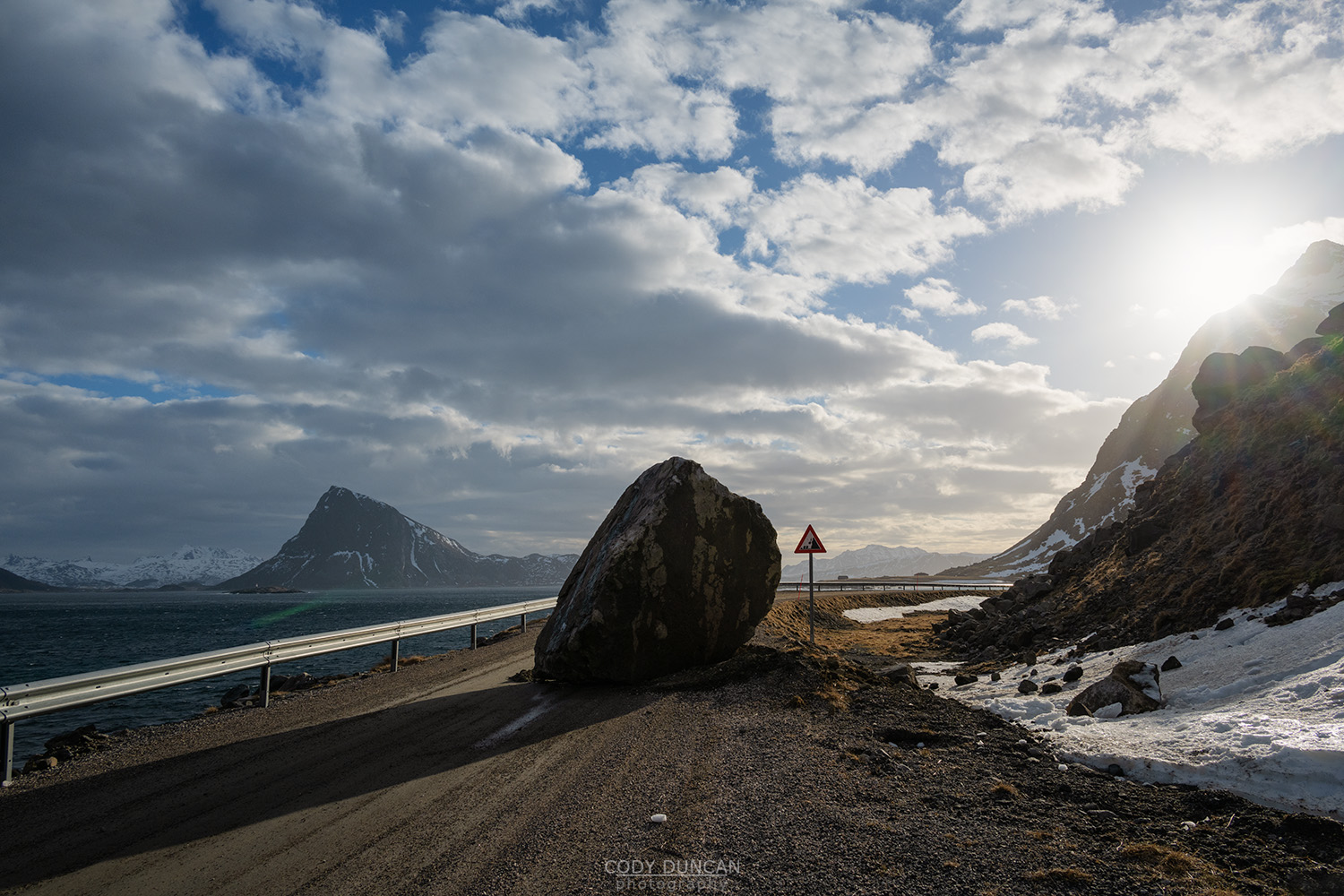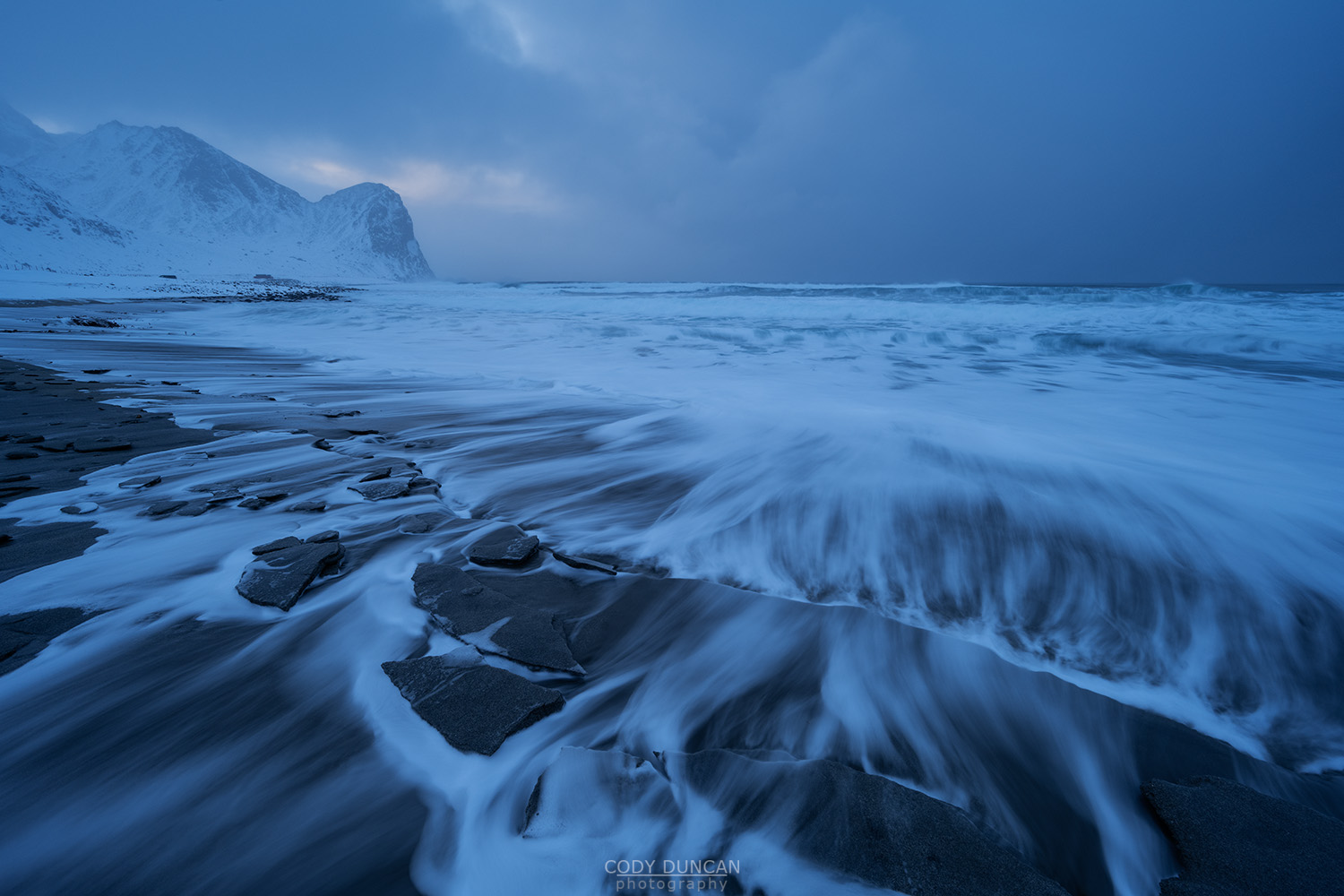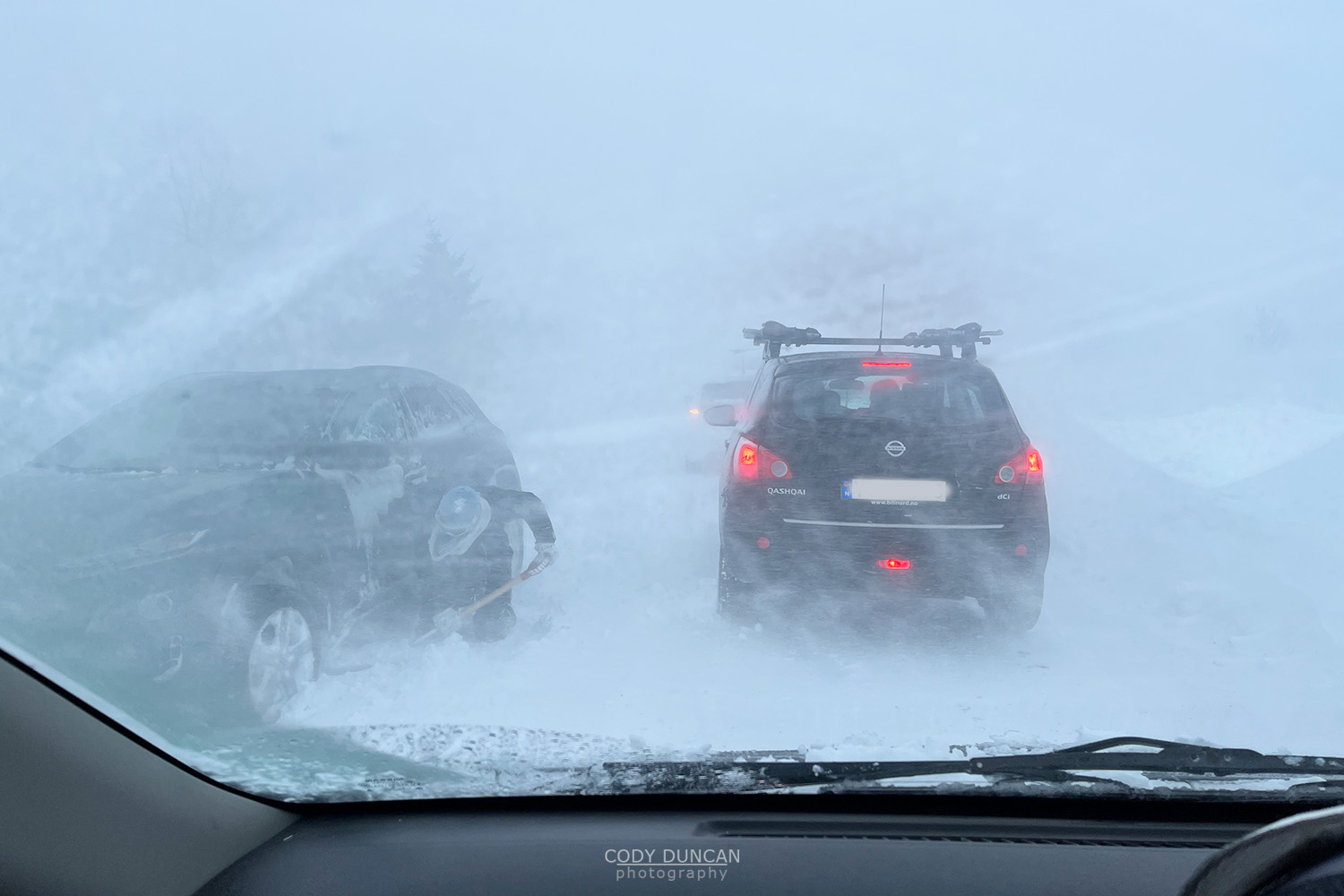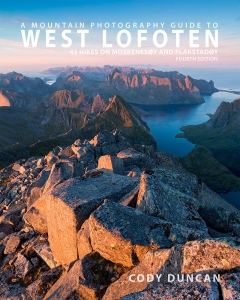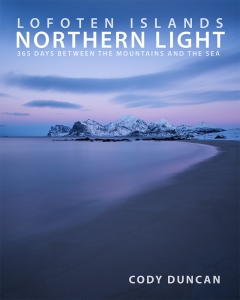Friday Photo #481 – Spring Oystercatchers
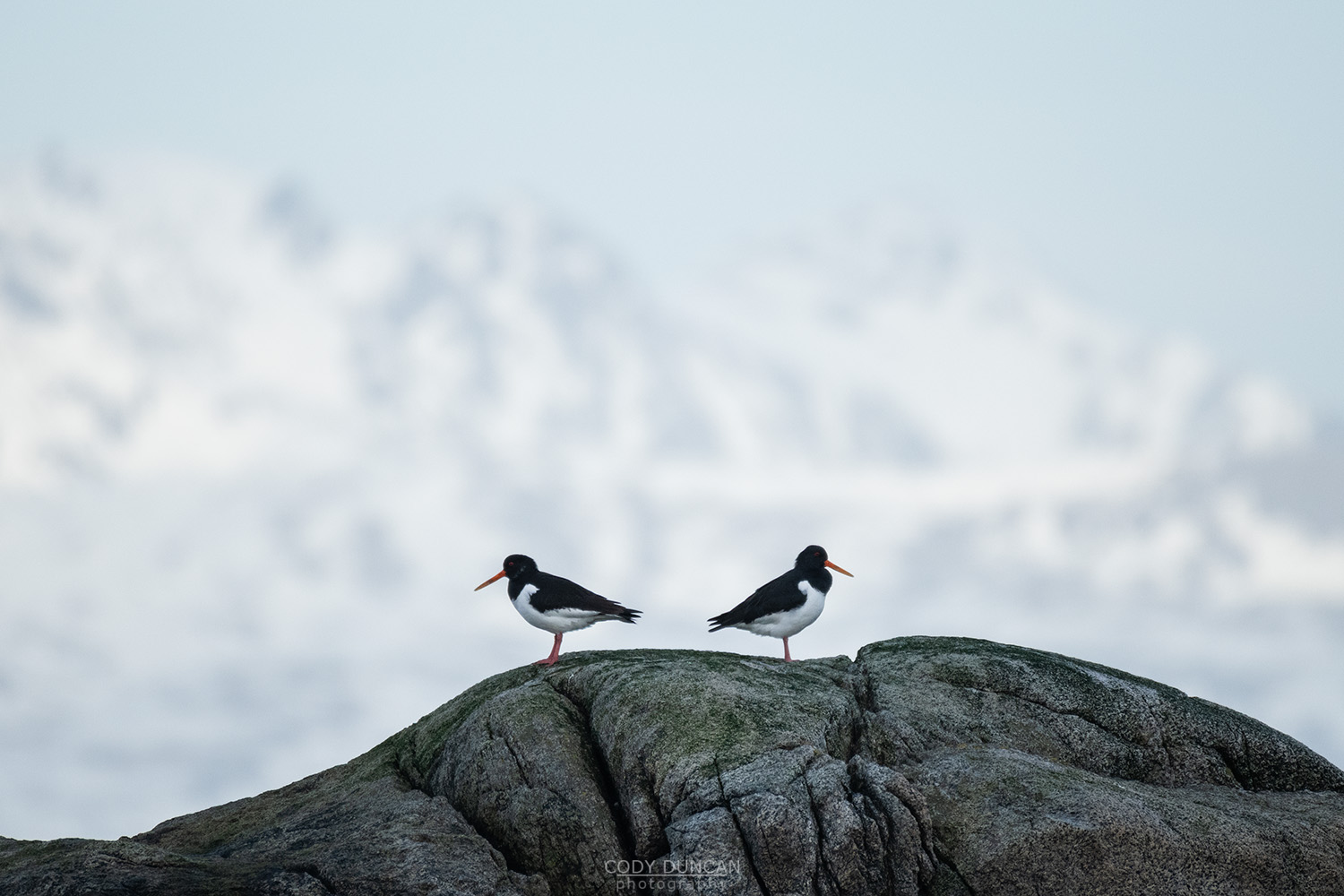
Photo: Oystercatcher pair on coastal rock with snowy Justadtind in the background on the first day of spring, Flakstadøy, Lofoten Islands, Norway. March 20, 2022. 17:25
Last Sunday was the vernal/spring equinox, marking the astronomical start of Spring here in the north. Though even after an unusually mild March, snow is once again falling today – so ‘green spring’ is still a ways a way up here. Yet there’s always one sign every year that winter will be ending eventually and that is the arrival of the Oystercatchers along Lofoten’s coastline.
This year, my first sighting was on Sunday the 13th, as I was driving towards Reine. I tried to get near some at Yttesand beach, but as I was slowly approaching, someone flew a drone overhead and scared them off… Though I’m not overly interested in bird photography, its more so that I have a record of when certain events occur each year. But I’d still like a nice photo is possible.
For this image, was on my second attempt I just took a walk down to the coastline from my house, from where I can hear them chirping away all day. At this time of year, before they have nested and laid eggs in the coastal grasses and fields, they are quite skittish and move off quickly. So giving up on the plan of getting very close, I tried to use a bit more of the landscape in the scene. In this case, the distant (and stilly snowy) mountain of Justadtind.
These two were well placed on the top of the rock, allowing me to slowly move around and change up the background a bit. Soon though, a 3rd oystercatcher arrived, to the annoyance of these two, and sent them off to defend their rock from the newcomer.
Head over to my Instagram account for (almost) daily postings of the local conditions here on Lofoten: @distant.north
Camera Info:
Nikon D850
Nikon 200-500mm f/5.6
500mm
ISO 640
f 5.6
1/1600 second
WB Daylight

